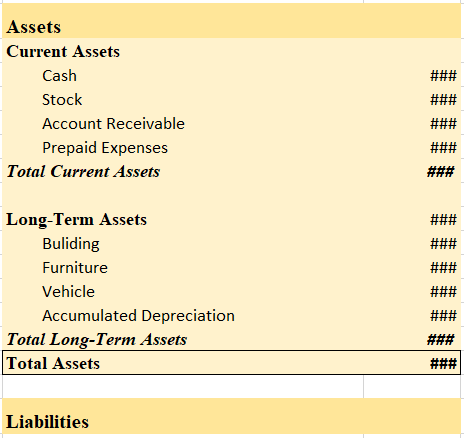Journal Entry for Calls in Advance Calls in advance mean excess money received by the company than what has been called up. Calls in advance are treated as Current Liability and shown in the Balance Sheet on the liability side. Journal Entry will be : Here we will "Debit" Bank A/c as it will increaRead more
Journal Entry for Calls in Advance
Calls in advance mean excess money received by the company than what has been called up. Calls in advance are treated as Current Liability and shown in the Balance Sheet on the liability side.
Journal Entry will be :

Here we will “Debit” Bank A/c as it will increase assets of the company and “Credit” Calls in Advance A/c because it will increase the company’s current liabilties.
For Example:
Mr.Z shareholder of ABC Ltd was allotted 2,000 equity shares of Rs.10 each. He paid call money at the time of allotment.
| On Application | Rs 5 |
| On Allotment | Rs 2 |
| On First and final call | Rs 3 |
Journal Entry is as follows:

Here, the company received an excess amount of Rs.6,000 (2,000*3) from a shareholder Mr.Z who paid the call money in advance. ABC Ltd will record this under Calls in Advance A/c. While passing journal entry ABC Ltd will debit its Bank A/c by Rs.6,000 and credit calls in advance account by Rs.6,000.
When share calls are called up, calls received in advance are adjusted. The company will hold only the required amount which will make allotted shares fully paid.
Once the amount is transferred to relevant call accounts, calls in advance account will be written off.
See less



Deferred Tax Liability A deferred tax liability represents an obligation to pay taxes in the future. These taxes are owed by a company but are not due to be paid until a future date. Companies that incur such an obligation prepare and maintain two financial reports every year: a tax statement and anRead more
Deferred Tax Liability
A deferred tax liability represents an obligation to pay taxes in the future. These taxes are owed by a company but are not due to be paid until a future date.
Companies that incur such an obligation prepare and maintain two financial reports every year: a tax statement and an income statement.
This is because companies maintain their books as per book accounting rules (GAAP/IFRS), but they have to pay taxes according to tax accounting rules, and they each have to follow their own guidelines.
For example, a tax statement follows the cash basis of accounting, and an income statement follows the accrual basis of accounting.
Companies calculate their profit as per the accounting rules as well as tax laws known as accounting income and taxable income, respectively. Some differences arise due to the application of different provisions of law.
These temporary differences are accounted for, recognized, and carried forward in the books of accounts and create deferred tax.
Example
Here is an example of deferred tax liability.
In the given example, tax as per income statement is 70,000, whereas as per tax statement it is 56,000. This temporary difference is termed as deferred tax liability of 14,000.
When accounting income is more than taxable income, it creates Deferred Tax Liability. It will be adjusted in the books of accounts during one or more subsequent year(s).
How Does it Arise?
There are several instances under which a company creates a deferred tax liability. Some other instances are:
Depreciation Methods
Treatment of Revenue & Expenses
Impact on Financial Statements
Recognising deferred tax liability and its subsequent effect on the company’s financial statement is important as it simplifies the process of auditing and analysing financial reports.
Balance Sheet
Cash Flow Statement
- The deferred tax liability is added back to the net income in calculating cash flow from operating activities to show the actual cash flow.
See less